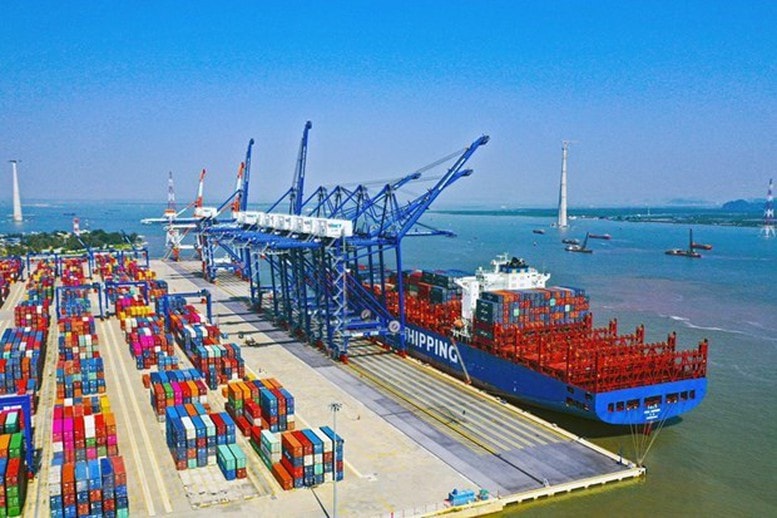Outlook for port stocks toward the end of 2025
By the end of the third quarter of 2025, the revenues and profits of Vietnamese port and shipping companies showed a mixed picture. So what is the outlook for this sector’s stocks heading into late 2025?

Port stocks are expected to retain some upside toward the end of 2025, but challenges remain. (Illustrative image)
Vinaship Joint Stock Company (VNA) posted weaker business results in Q3/2025. The company reported a loss of more than VND 9 billion in the period, compared with a loss of VND 3.9 billion a year earlier. Revenue fell 18% to nearly VND 134 billion. Notably, VNA recorded a negative gross profit of VND 500 million, indicating it is operating below cost.
For the first nine months, VNA’s revenue dropped slightly by 3% year-on-year, with a loss of VND 8.7 billion, compared with a profit of nearly VND 24 billion in the same period last year. As of the close on 25 November, VNA shares stood at VND 16,600.
Meanwhile, Hai An Transport and Stevedoring Joint Stock Company (HAH) recorded revenue of VND 1.347 trillion, up 19%, and post-tax profit of VND 353 billion, up 27.5% year-on-year. Over the first nine months, HAH generated VND 3.791 trillion in revenue, up more than 36%, and VND 1.04 trillion in post-tax profit—2.5 times higher than the same period last year. With these results, HAH has achieved nearly 90% of its 2025 revenue target and 142% of its full-year profit target. By the close on 25 November, HAH was trading at VND 60,300 per share.
Vietnam Ocean Shipping Joint Stock Company (VOS) also reported strong profit growth, with net profit rising to VND 131 billion, despite revenue falling 33% year-on-year to VND 850 billion. The bulk of this profit came from the sale of the vessel Vosco Star, which generated VND 99 billion. Excluding this one-off income, VOS still posted a VND 32 billion profit—significantly improved from a loss of VND 14 billion in Q3/2024 and a loss of more than VND 43 billion in the first half of 2025.
In the first nine months, VOS recorded revenue of VND 2.147 trillion, down nearly 50%, and profit of more than VND 88 billion, down 74% year-on-year. Still, this performance is considered positive, as in the same period of 2024, VOS had reported an exceptional profit of more than VND 390 billion from the sale of the vessel Đại Minh. At the close on 25 November, while the broader market declined sharply, VOS shares held steady at VND 12,900.
Assessing the Q3/2025 growth of the port and maritime transport sector, analysts noted that Vietnam’s continued economic expansion has strongly supported import–export activity—a major tailwind for the industry. However, the slow global economic recovery has weighed on shipping demand and corporate growth, leading to clear divergence among port and shipping stocks over the past quarter.
According to Mirae Asset Securities, import–export activity has remained stable, and domestic production is improving. Vietnam’s trade value reached USD 762 billion in the first 10 months. However, customs clearance activities have slowed. In 2025, Vietnam also signed five new comprehensive strategic partnership agreements with New Zealand, Indonesia, Singapore, Thailand, and the United Kingdom.
A total of 14 countries now have comprehensive strategic partnership agreements with Vietnam, creating opportunities for port and shipping companies as they expand into these markets. Southeast Asia and South Asia are expected to become attractive destinations for manufacturing shifts, particularly in labor-intensive sectors.
Vietnam, with political stability, a growing network of international partnerships, and major infrastructure investment, stands to benefit from this trend. A more diversified manufacturing landscape will increase shipping demand, supporting Vietnamese maritime transport companies.
Since the beginning of the year, port stocks overall have risen—most notably HAH and GMD—though the upward momentum has often proven unsustainable. Price movements have largely been driven by quick reactions to earnings reports or company-specific stories, such as dividend distributions and capital increases at HAH, VOS, and GMD.
Therefore, analysts forecast that while port stocks carry potential, the sector still faces significant challenges. Many major global shipping companies are aggressively expanding their container fleets, ushering in a new oversupply cycle expected to peak by 2027.
Additionally, the trend of stockpiling goods—amid rising uncertainty—may depress import–export demand, reducing shipping volumes and affecting the sector’s revenue and profitability. As a result, investors holding port and maritime transport stocks should closely monitor market developments and respond promptly to emerging risks.








